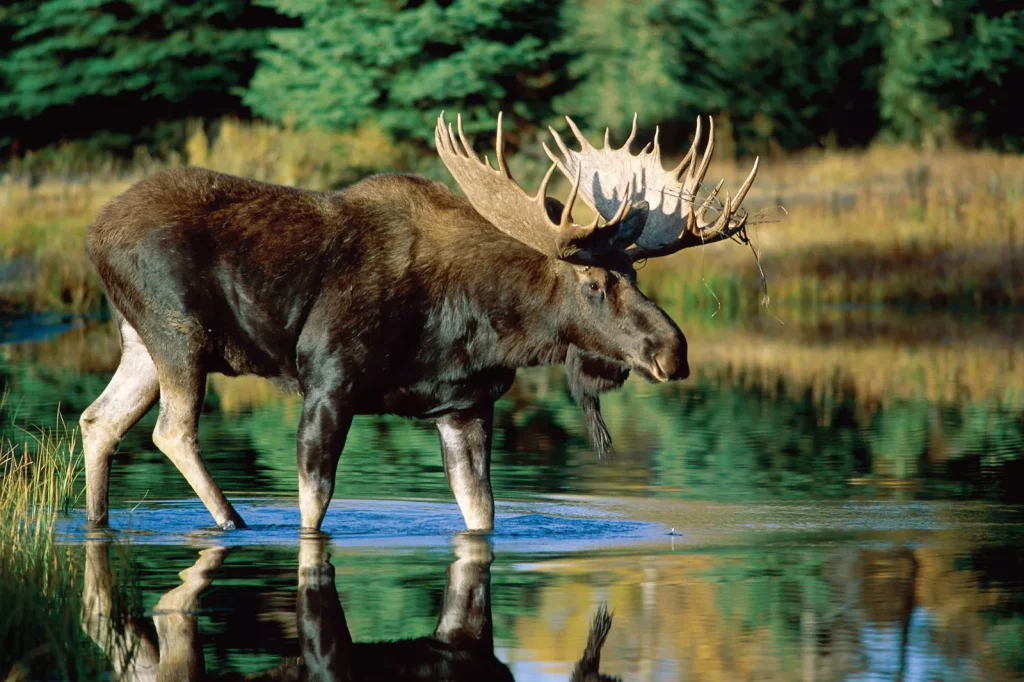Moose, the largest deer species, have a wide range due to their lifestyle and habitat requirements. Their range varies significantly across regions and seasons, making them important subjects for studying large wildlife behavior. In many nature centers and wildlife theme parks, you might even see moose statue symbolizing their strength and character, reminding people of the ecological space needs of these giants.
Moose ranges are typically influenced by factors such as food distribution, seasonal migration, predator pressure, and reproductive needs. In summer, with abundant water and lush vegetation, moose ranges are relatively small, generally around 5 to 10 square kilometers. They frequently travel between wetlands, lakes, and forest edges to forage for aquatic plants and tender shoots. With the arrival of winter, as snow accumulates and food becomes scarcer, moose expand their range in search of more suitable wintering grounds; their home range can extend to 20 square kilometers or even further.
Adult male moose expand their range further during the mating season to find mates; while female moose tend to reduce movement during the calving season, choosing secluded and safe forest areas as their fixed habitats. It is worth noting that the expansion of human activity has further fragmented the traditional migration routes of moose, increasing their migration stress and foraging difficulties.
To raise public awareness of moose habitat conservation, many outdoor campsites and ecological exhibition halls feature realistic moose statues, artistically representing the power and wildness of the moose, and symbolizing that wild animals need sufficient space to maintain a healthy population structure.

